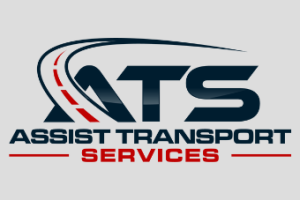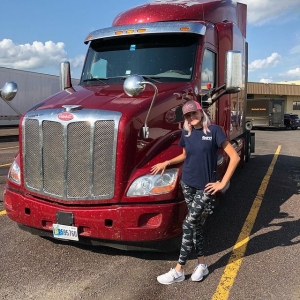
Being a recruiter in any industry is challenging, but recruiting in the trucking industry is an especially difficult task. The jobs that you’re filling are tough, drivers are scarce, and the old ways of recruiting don’t work like they used to. All of this can make being a driver recruiter seem like too big of an uphill challenge, but it’s very possible to find success in this position.
If you’re a recruiter who’s overwhelmed, and looking for a new approach to driver recruiting, here are 3 tips to becoming a better driver recruiter.
1. Know the Answers
 When speaking with driver candidates, be sure you’re an expert on your company and the particulars of the job. Know what the day-to-day will look like and give honest answers. Don’t sugarcoat things if you know that your company might not have the world’s best benefits or if the pay might not be at the top of the scale.
When speaking with driver candidates, be sure you’re an expert on your company and the particulars of the job. Know what the day-to-day will look like and give honest answers. Don’t sugarcoat things if you know that your company might not have the world’s best benefits or if the pay might not be at the top of the scale.
If a driver ends up asking you a technical question that you don’t know the answer to, never guess or say something you think might be right. Always tell them something along the lines of, “I’m not sure, but I can get back to you ASAP with an answer.” Drivers understand that not every recruiter will know all the details about a job as complicated as truck driving. especially if they relate to equipment or maintenance. Consulting your team then reaching back out to the driver with the answer that’s 100% correct is always the best policy.
As the first one to communicate with a driver candidate, you’re in a position to be the best advocate for your carrier. Be knowledgeable, truthful, and you’ll find that drivers who choose your company will stay longer.
2. Have a Plan
 This may sound obvious, but you’d be surprised how many recruiting departments lack a cohesive plan for how to bring drivers into their organization. While each hiring plan will vary from carrier to carrier, all of them should have two things in common. They should be measurable and repeatable.
This may sound obvious, but you’d be surprised how many recruiting departments lack a cohesive plan for how to bring drivers into their organization. While each hiring plan will vary from carrier to carrier, all of them should have two things in common. They should be measurable and repeatable.
If you’re just getting started, map out all the actionable steps in the hiring process from start to finish. This should include posting jobs, interviewing candidates, doing background checks and everything else associated with the hiring process.
Next, decide on a timeframe for each of these steps. Should the interview process take at most two weeks, three weeks, or a month? Each carrier is different, so it’s up for you to decide.
Throughout the process, you should be measuring key performance Indicators, or KPIs related to your hiring performance. A few common ones in HR and recruiting are Cost Per Hire and Time to Hire. Measuring these KPIs is the only way that you can track your performance as a recruiter and get better.
3. Leverage Automation
 If one of your biggest issues as a recruiter is that drivers are slipping through the cracks, or you don’t have the time to reach out to all the qualified drivers you can, then automation is the answer.
If one of your biggest issues as a recruiter is that drivers are slipping through the cracks, or you don’t have the time to reach out to all the qualified drivers you can, then automation is the answer.
Automation tools like applicant tracking systems will help you eliminate time-consuming manual processes like reaching out to a large number of drivers at once, collecting VOEs and performing background checks. This will free up time so you can do what you do best; make connections with driver candidates. Do some research on automation partners that fit your budget and who are devoted to making the life of a driver recruiter easier.
Bonus Tip – Utilize a Recruiting Partner
Aside from finding a partner for automation, consider working with a company that can help you find the best matches for your open jobs. Drive My Way is a next generation recruiting marketplace that matches truck drivers with jobs based on their qualifications and personal preferences.
We’re making truck driver recruiting personal again by creating meaningful connections for employers to turn into lasting relationships; just like we did with Argos USA. We’re ready to help you put together a plan that best fits your needs, and help you recruit drivers that are the best fit for your open positions.

 Comprehensive CDL Recruitment Solutions
Comprehensive CDL Recruitment Solutions

 The most important part of strong communication with drivers is good listening. This means you actually take time and effort to hear drivers’ concerns and then address them. Good listening isn’t just reactive. Don’t just wait for drivers to come to you with their concerns. Be curious enough to inquire about their needs and questions.
The most important part of strong communication with drivers is good listening. This means you actually take time and effort to hear drivers’ concerns and then address them. Good listening isn’t just reactive. Don’t just wait for drivers to come to you with their concerns. Be curious enough to inquire about their needs and questions. Sometimes, the medium is the message. Choosing the proper communication method can make the difference between having successful conversations with drivers or leaving them frustrated. Some issues are too long or complicated to discuss over text or email. Calling drivers’ cell phones is the most popular way to communicate with drivers for a good reason.
Sometimes, the medium is the message. Choosing the proper communication method can make the difference between having successful conversations with drivers or leaving them frustrated. Some issues are too long or complicated to discuss over text or email. Calling drivers’ cell phones is the most popular way to communicate with drivers for a good reason.
 This one cannot be overstated. None of your communication strategies and methods are going to work if drivers don’t feel that you’re treating them with respect.
This one cannot be overstated. None of your communication strategies and methods are going to work if drivers don’t feel that you’re treating them with respect.

 Truck driver retention is a well-documented problem in the trucking industry. Carriers are finding it harder and harder to retain qualified drivers after they’ve joined their fleet. The problem is even worse in the
Truck driver retention is a well-documented problem in the trucking industry. Carriers are finding it harder and harder to retain qualified drivers after they’ve joined their fleet. The problem is even worse in the  If you’re experiencing a high turnover of new drivers, the most important thing to do is figure out why. And the best people to ask? The drivers who are leaving.
If you’re experiencing a high turnover of new drivers, the most important thing to do is figure out why. And the best people to ask? The drivers who are leaving. Everybody wants to feel appreciated at their job, and everybody likes to have tangible goals that they can work towards and achieve. This is the guiding principle behind having awards and incentive programs in the workplace.
Everybody wants to feel appreciated at their job, and everybody likes to have tangible goals that they can work towards and achieve. This is the guiding principle behind having awards and incentive programs in the workplace.  Not every driver is a fit for every carrier, and that’s ok. Recruiting isn’t about finding any driver for the position. It’s about finding the
Not every driver is a fit for every carrier, and that’s ok. Recruiting isn’t about finding any driver for the position. It’s about finding the 

 It’s not breaking news that print media is on the decline. While ads in newspapers and magazines may have been the primary advertising channel decades ago, readership has gone down significantly.
It’s not breaking news that print media is on the decline. While ads in newspapers and magazines may have been the primary advertising channel decades ago, readership has gone down significantly.  You’ve seen these ads everywhere: Ones with 20-30 bullets listing out every facet and minute detail of a job. But the more information available for prospective hires, the better, right? Think again. In that very early stage of the job search, driver candidates are usually just looking for a few pieces of key information so they can decide if they want to learn more about the position.
You’ve seen these ads everywhere: Ones with 20-30 bullets listing out every facet and minute detail of a job. But the more information available for prospective hires, the better, right? Think again. In that very early stage of the job search, driver candidates are usually just looking for a few pieces of key information so they can decide if they want to learn more about the position.  To simply call social media popular anymore is a gross understatement. It’s become so entwined with people’s lives that we almost can’t imagine life without it. This is why it’s important for carriers who are looking to reach more drivers through their job ads to build up a presence on these social media sites.
To simply call social media popular anymore is a gross understatement. It’s become so entwined with people’s lives that we almost can’t imagine life without it. This is why it’s important for carriers who are looking to reach more drivers through their job ads to build up a presence on these social media sites. 
 “The holiday season, also known as peak season, is typically our busiest time of year. From Thanksgiving through New Year’s, our dedicated lanes usually double or triple in volume and frequency. We find ourselves doing multiple runs to the same locations per day to keep up with the extra freight that is being shipped. We also take on some new pickups/lanes that are seasonal only.”
“The holiday season, also known as peak season, is typically our busiest time of year. From Thanksgiving through New Year’s, our dedicated lanes usually double or triple in volume and frequency. We find ourselves doing multiple runs to the same locations per day to keep up with the extra freight that is being shipped. We also take on some new pickups/lanes that are seasonal only.”





 The number one reason that truck drivers end up declining a job is because they’ve already accepted a different offer that reached them first. This is why quickly moving your candidates through the recruiting pipeline is so important.
The number one reason that truck drivers end up declining a job is because they’ve already accepted a different offer that reached them first. This is why quickly moving your candidates through the recruiting pipeline is so important. Time isn’t the only way to measure efficiency in recruiting. Cost per hire or CPH is an essential metric that measures how
Time isn’t the only way to measure efficiency in recruiting. Cost per hire or CPH is an essential metric that measures how  Gone are the days of putting up some flyers and placing your job ad in the newspaper. Digital is king now, with most interested drivers coming from Google searches,
Gone are the days of putting up some flyers and placing your job ad in the newspaper. Digital is king now, with most interested drivers coming from Google searches,  The above metrics take into account truck driver recruiting efforts before the job starts. But those aren’t the only ones you should be looking at. Connecting recruiting efforts with the quality of your hires and their first-year job performance can help you see if your recruiting team is going after the right candidates.
The above metrics take into account truck driver recruiting efforts before the job starts. But those aren’t the only ones you should be looking at. Connecting recruiting efforts with the quality of your hires and their first-year job performance can help you see if your recruiting team is going after the right candidates.  Measuring driver satisfaction is one of the secrets to measuring recruiting success and maximizing driver retention. Drivers and fleets are both looking for a strong match. If drivers aren’t happy with their carrier, it’s only a matter of time before they start looking elsewhere. Given the current state of the trucking industry, your fleet can’t afford to lose a driver after already spending resources on hiring and onboarding.
Measuring driver satisfaction is one of the secrets to measuring recruiting success and maximizing driver retention. Drivers and fleets are both looking for a strong match. If drivers aren’t happy with their carrier, it’s only a matter of time before they start looking elsewhere. Given the current state of the trucking industry, your fleet can’t afford to lose a driver after already spending resources on hiring and onboarding.  All across the country, skyrocketing fuel prices are taking their toll on everyone. Offices are extending
All across the country, skyrocketing fuel prices are taking their toll on everyone. Offices are extending 







